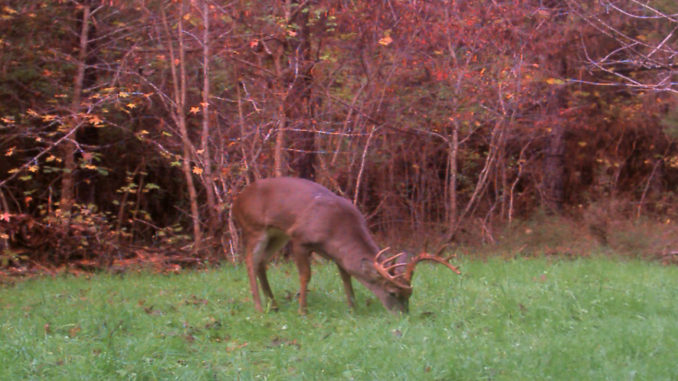
Managing for trophy bucks challenges hunters to invest their time and money and forces them to adopt critical-thinking skills during and beyond the season. Hunters can plant food plots, coordinate with farmers to plant protein-rich foods, put out mineral supplements and monitor every their property with trail cameras, but the harvesting portion must be handled with care to make sure the right deer end up on the chopping block.
Mature bucks are part of every management plan. If the deer is mature and sports a massive rack, it will easily make the cut. But what about the big 10-pointer with a beautiful rack attached to a small body or a deer with a small, stubby rack on a 200-pound beast. Hunters need to be able to distinguish between young and old, mature animals.
For starters, antlers can easily mislead hunters into thinking a buck is old. Hunters need to ignore them and look at body characteristics to determine a buck’s age.
Deer age in a manner similar to humans with respect to muscle tone, skin looseness, overall body shape and physical characteristics. Hunters need to learn which traits to look for in a young adolescent animal as compared to a mature buck.
Rarely will a 1½-year-old buck look like a mature deer. Body wise, this deer resembles a doe, but with antlers — and usually the antlers are thin, small and with only small branching.
As bucks move into the 2½-year age category, a well-fed, genetically superior animal can have heavy horns; however, their bodies are not yet mature. They exhibit more muscle tone throughout their bodies, with a bulkier front-shoulder region, but their neck is sleek, still without much definition.
At 3½, the neck and shoulder region is very well-defined, and the front half of the body is much larger or deeper than their hindquarters. If a buck reaches this category, many hunters mistake these deer for mature bucks, and they end up in the skinning shed. It is not until they are aged via jawbone analysis that hunters understand they aren’t at their peak yet.
Finally at 4½, bucks reach their prime, and their physiques will show it. These deer have filled out considerably from the hindquarters to where the neck connects to the front shoulders making the legs appear short. If well-fed, in good habitat, a mature, 4½-year-old buck should weigh in excess of 190 pounds. Any deer older than 4½ should count as a shooter, as the appearance of their body will quickly deteriorate with time.
In order to promote top-quality animals on a property, hunters should recognize how old bucks are by their body shape and make the correct harvesting decisions. An informed hunter with an educated trigger finger will improve the quality of bucks in their local herd.




Be the first to comment